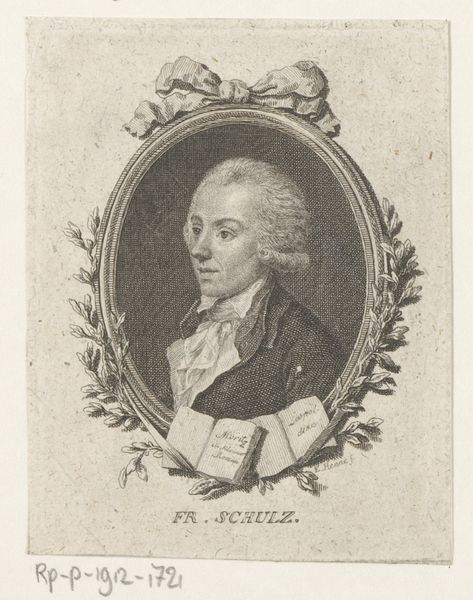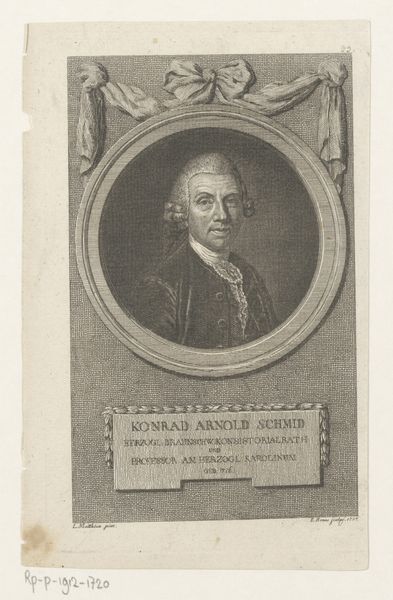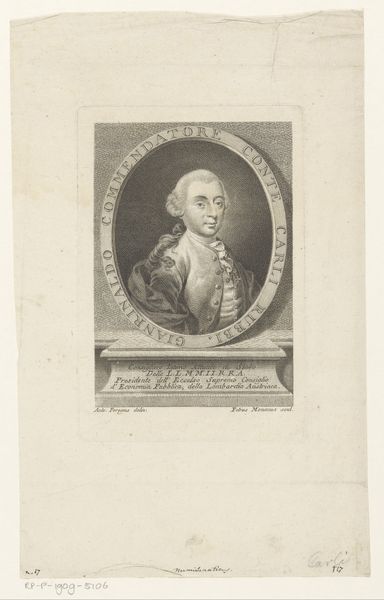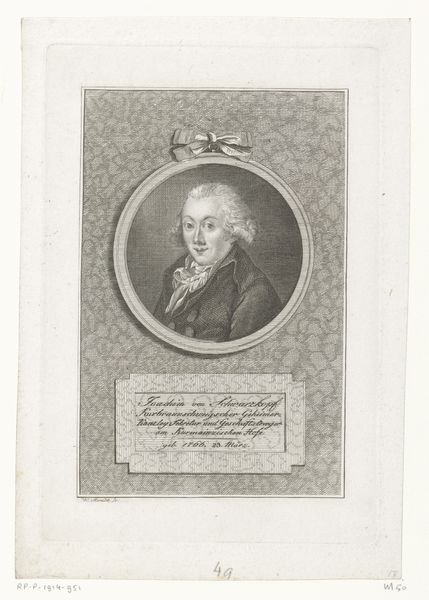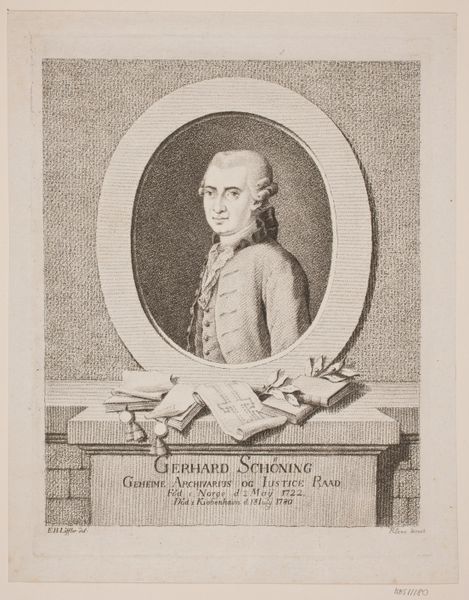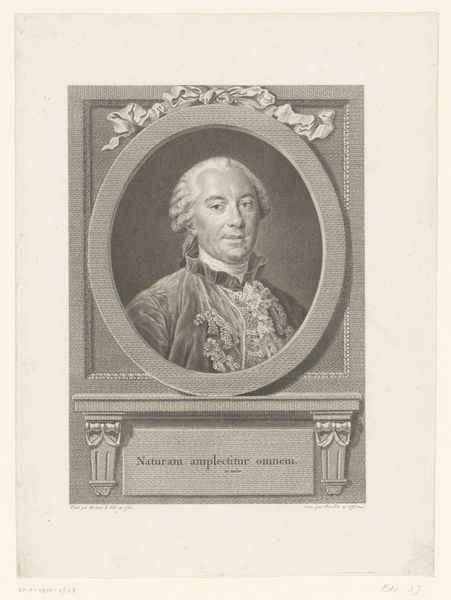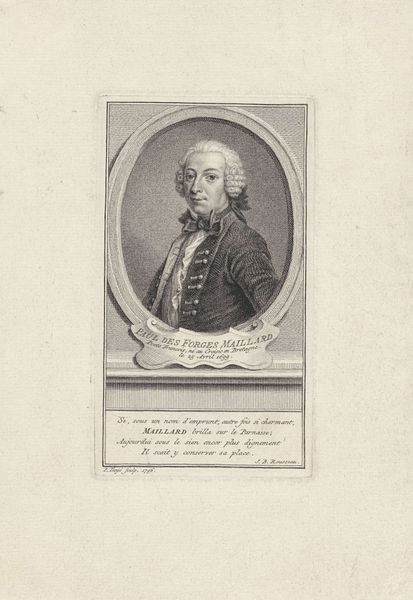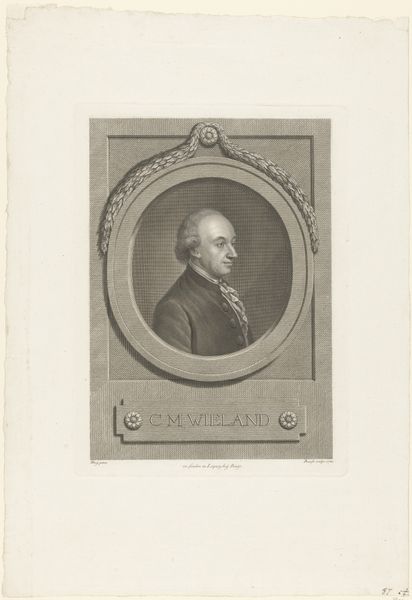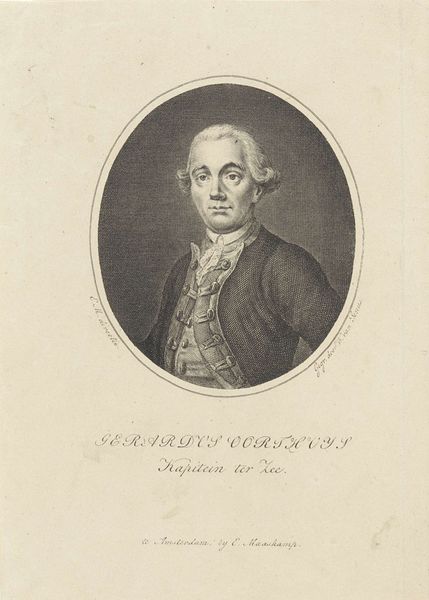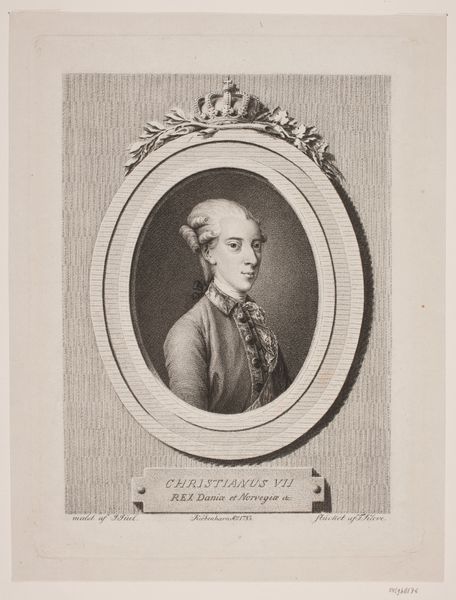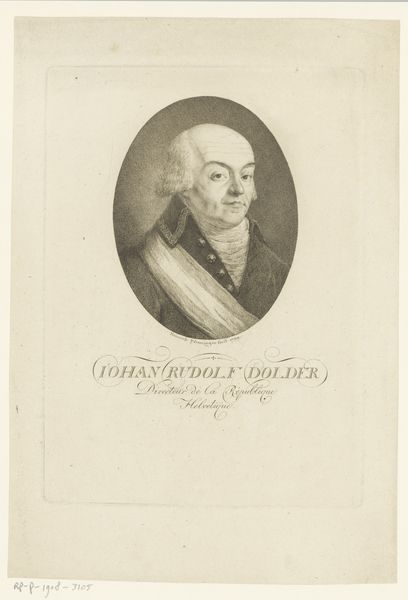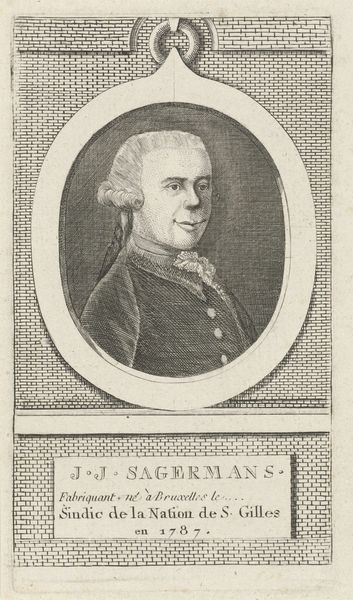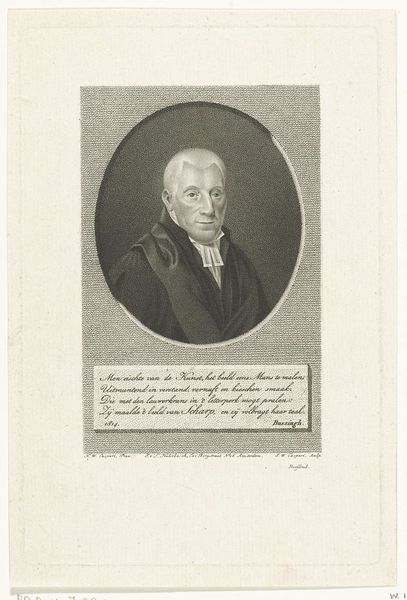
engraving
#
portrait
#
neoclacissism
#
academic-art
#
engraving
Dimensions: height 166 mm, width 113 mm
Copyright: Rijks Museum: Open Domain
Curator: This is a fascinating print. Here we see "Portret van Johan Arnold Zoutman," an engraving created sometime between 1783 and 1795 by Reinier Vinkeles, currently held in the collection of the Rijksmuseum. Editor: Well, my initial feeling? It's got this buttoned-up, almost bureaucratic air. The man himself, of course, framed like a prized possession, but below? Is that...cannon? With a ship's wheel thrown casually? It feels strangely like a business card for conquering the sea! Curator: Zoutman, indeed, was a naval figure, Admiral and all. The symbolism here works on several layers. Notice the classical framing—the oval portrait reminiscent of ancient cameos. It presents Zoutman as a man of reason and civic virtue, key Neoclassical ideals, of course. The inclusion of the nautical tools isn’t simply decorative; they are symbols of his accomplishments, of the Enlightenment belief in taming nature through science. Editor: Taming nature, right, while blowing up other people’s ships? This supposed "taming" always feels a little...on edge. And it's funny, how even in these official portraits, a certain personality peeps through. The slightly downturned mouth, like he is perpetually disapproving, almost seems a smirk. Does that come through in the symbolic message or even challenge it? Curator: Precisely! I think it speaks volumes about how artists negotiate the very purpose of portraiture. Is it to record likeness, construct authority, or offer something more complex? Here, the precision of the engraving and Neoclassical style might emphasize order and reason, but those subtle human details inject that intriguing tension. Even the placement of Zoutman above the artillery signifies his position in the naval hierarchy. He literally towers above the tools of his trade. Editor: So it's a power move then, visual PR of sorts! But looking closer at the cannon, its got all those decorative flourishes. Makes me wonder how the artist really felt about it. Was he glamorizing conflict or adding that artistic irony to remind us that even instruments of destruction can be pretty when etched onto paper? Curator: I'd say the artist, Vinkeles, adeptly blended reverence with subtle, knowing observation. These objects in this art remind us of a certain period of European thought. Editor: Well, it's given me plenty to mull over. What starts as a rigid historical portrait peels away into fascinating little layers, like looking at the roots of an old tree, I see and get so much more!
Comments
No comments
Be the first to comment and join the conversation on the ultimate creative platform.
